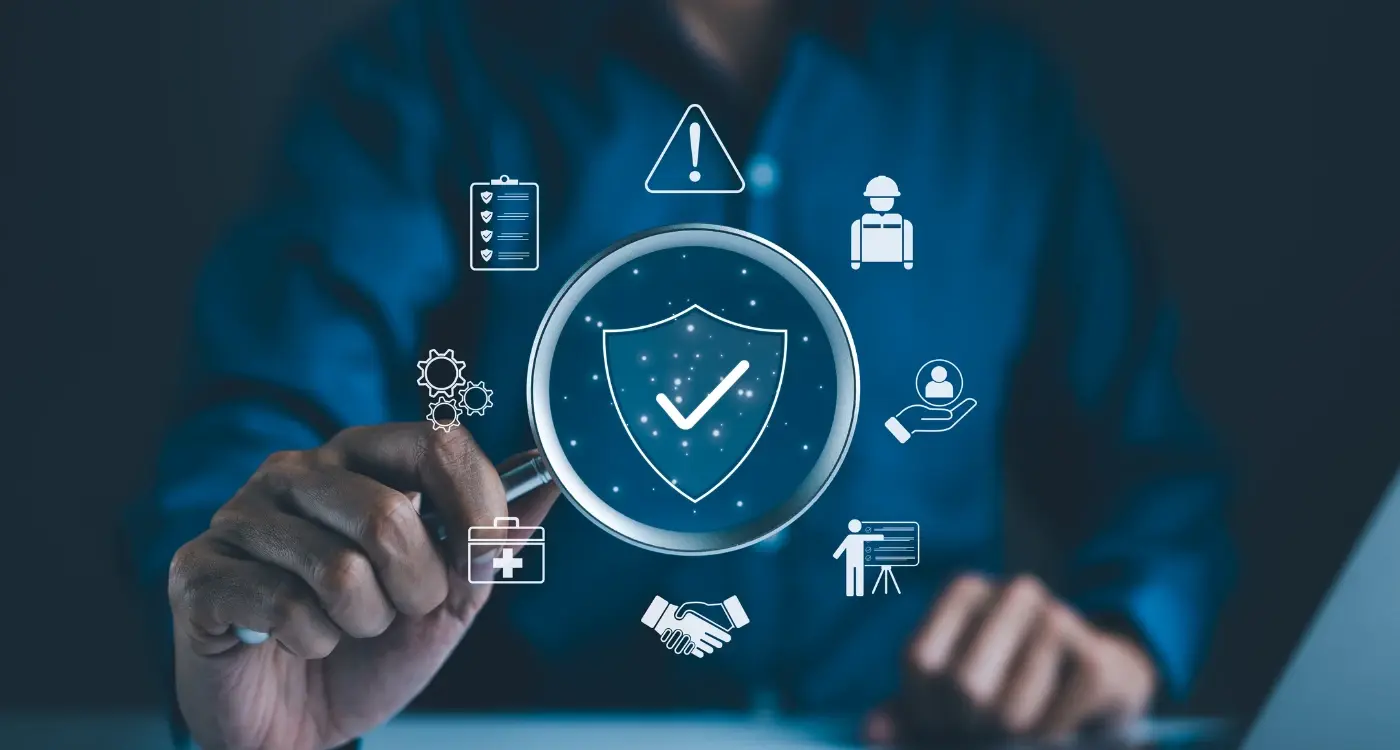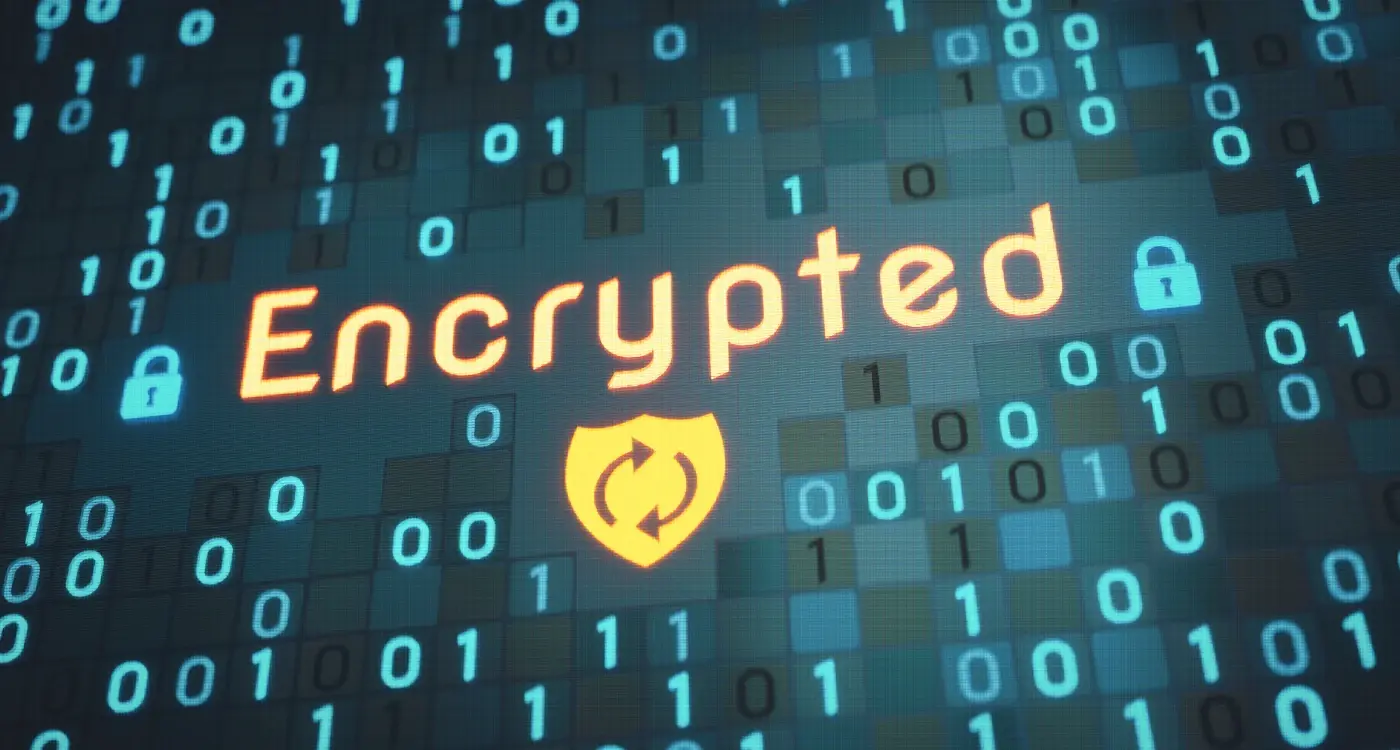How Secure Are Blockchain Mobile Apps Really?
Right now, millions of people are using blockchain mobile apps to send money, buy digital art, and trade cryptocurrencies—but most have no idea how vulnerable their data actually is. The promise of blockchain technology sounds incredible: unbreakable security, transparent transactions, and complete control over your digital assets. Yet security breaches in blockchain apps happen more often than most people realise, with hackers stealing billions of pounds worth of digital assets each year.
Here's the thing about blockchain security—it's not as simple as "blockchain equals secure." The blockchain itself might be nearly impossible to hack, but the mobile app you're using to access it? That's a completely different story. Every tap, swipe, and transaction goes through layers of code that can have weak spots.
The strongest blockchain in the world is only as secure as the weakest link in your mobile app
After building mobile apps for nearly a decade, I've seen how easy it is for developers to focus on making blockchain apps work whilst accidentally creating security holes. The real question isn't whether blockchain technology is secure—it's whether the mobile app connecting you to that blockchain can actually protect your data, your money, and your privacy. That's what we're going to explore together.
What Is Blockchain Technology in Mobile Apps
Right, let's start with the basics—what exactly is blockchain when we're talking about mobile apps? Think of blockchain as a special type of database that stores information across multiple computers at once. Instead of keeping all your data in one place (like a traditional app might), blockchain spreads it out and links everything together in chains of information blocks.
When you use a blockchain mobile app, you're not just connecting to one central server. You're part of a network where lots of computers work together to keep your data safe and accurate. Each time something happens in the app—like sending money or updating your profile—the network checks it's legitimate before adding it to the chain.
How This Actually Works in Your Phone
Most blockchain mobile apps don't actually run the full blockchain on your device (that would be massive and drain your battery in minutes!). Instead, they connect to the blockchain network through special gateways. Your app might store some information locally, but the important stuff gets verified by the network.
Common Types of Blockchain Apps
You'll find blockchain technology in several types of mobile apps:
- Cryptocurrency wallets for storing and sending digital money
- Supply chain apps that track products from factory to shop
- Digital identity apps that prove who you are
- Gaming apps with collectible items you actually own
- Social media apps where you control your own data
The key difference? Traditional apps can change or lose your data; blockchain apps create permanent records that can't be easily altered or deleted.
How Blockchain Security Actually Works
Right, let's get into the meat of how blockchain security actually protects your mobile app and its users. I'll be honest—when I first started working with blockchain technology, I thought it was some kind of magic bullet that would solve all our security problems. Spoiler alert: it's not magic, but it is pretty clever.
Blockchain security works through something called cryptographic hashing. Think of it as giving each piece of data a unique fingerprint that changes completely if someone tries to tamper with it. When your mobile app stores information on a blockchain, that data gets bundled with other transactions into a 'block' and then linked to the previous block using these fingerprints.
The Chain That Can't Be Broken
What makes this system secure is that changing one piece of data would require changing every single block that comes after it—and that needs to happen across thousands of computers simultaneously. It's like trying to change a word in a book that's been photocopied thousands of times and distributed around the world.
Don't assume blockchain security is automatic—your mobile app still needs proper implementation and regular security audits to stay protected.
Decentralisation: Your Security Safety Net
The real strength comes from decentralisation. Instead of storing your app's data on one server that hackers can target, blockchain spreads it across multiple nodes. Even if someone compromises one node, they can't manipulate the entire network because the other nodes will reject any dodgy changes.
Common Security Risks in Blockchain Mobile Apps
Working with blockchain mobile apps over the years has taught me that whilst the technology itself is pretty solid, the apps built on top of it? Well, that's where things get interesting. The mobile environment creates unique challenges that don't exist in traditional web applications—limited processing power, battery constraints, and users who expect everything to work instantly.
Let me break down the most common security risks I've encountered when building blockchain mobile apps. These aren't theoretical problems; they're real issues that can cost your users money and destroy your reputation overnight.
Wallet and Private Key Vulnerabilities
The biggest risk by far is how private keys are stored and managed. Mobile devices weren't designed to be secure vaults, yet that's exactly what we're asking them to do. Poor key management can lead to complete loss of funds—there's no "forgot password" button in blockchain.
- Private keys stored in plain text on the device
- Inadequate encryption of wallet data
- Keys transmitted over insecure channels
- Backup and recovery mechanisms that expose keys
- Apps that don't use hardware security modules when available
Smart Contract Integration Issues
Many blockchain mobile apps interact with smart contracts, and this creates another layer of risk. The mobile app might be secure, but if the smart contract has vulnerabilities or the integration is poorly implemented, users are still at risk. I've seen apps that don't properly validate smart contract responses or fail to handle edge cases in contract execution.
Real-World Security Breaches and What We Learned
I've watched countless blockchain mobile apps launch over the years, and sadly, I've also watched some spectacular failures. The crypto wallet breaches alone have cost users millions—and these aren't just random attacks by bedroom hackers. We're talking about sophisticated exploits that found weaknesses in supposedly bulletproof systems.
The Most Damaging Attacks
One of the biggest lessons came from mobile wallet apps that stored private keys locally without proper encryption. Attackers found ways to extract these keys directly from compromised devices, bypassing the blockchain security entirely. Another common pattern? Apps that didn't validate smart contract interactions properly, allowing malicious contracts to drain user funds.
We learned that the weakest link in blockchain security isn't usually the blockchain itself—it's how mobile apps connect to it
What These Breaches Taught Us
The mobile app security landscape changed dramatically after these incidents. We now know that assuming the blockchain layer is secure isn't enough; the mobile app layer needs just as much attention. Every user input needs validation, every connection needs encryption, and every private key needs hardware-level protection where possible. These hard-learned lessons have shaped how we approach blockchain mobile app development today—with much more respect for the potential consequences of getting security wrong.
Best Practices for Building Secure Blockchain Apps
Right, let's talk about actually building these apps properly. I've worked on enough blockchain projects to know that good intentions aren't enough—you need solid practices from day one. The most important thing? Never store private keys on the device itself. I can't stress this enough. Your users' private keys should live in secure hardware wallets or be generated fresh each time they're needed.
Code Like Security Matters
When you're writing the code, always validate everything that comes from the blockchain before your app uses it. Just because something exists on the blockchain doesn't mean it's trustworthy—remember, anyone can write to most blockchains. Use proper encryption for any sensitive data your app handles, and make sure you're connecting to legitimate blockchain nodes, not some dodgy imposter.
Keep Things Updated
Smart contracts can't be patched like regular software, so get them audited before launch. Seriously, it's worth the cost. For your mobile app code, keep all your blockchain libraries updated—security patches come out regularly for good reason. And here's something I learned the hard way: always have a plan for when things go wrong. Build in circuit breakers that can pause operations if something looks fishy.
Testing and Monitoring Your App's Security
Building a secure blockchain mobile app is one thing—keeping it secure is another challenge entirely. I've seen too many developers breathe a sigh of relief after launch, thinking their work is done. That's when the real problems start.
Security testing isn't a one-time event; it's an ongoing process that needs to happen throughout your app's lifecycle. You'll want to run penetration tests regularly, checking for vulnerabilities in your smart contracts and mobile app infrastructure. These tests simulate real attacks and help you spot weaknesses before hackers do.
Automated Monitoring Tools
Smart monitoring systems can watch your app 24/7, looking for unusual activity patterns or potential security breaches. These tools track everything from transaction anomalies to suspicious login attempts. When something doesn't look right, you'll know immediately—not weeks later when the damage is done.
Manual Security Reviews
Automated tools are brilliant, but they can't catch everything. Regular manual code reviews by security experts help identify logic flaws and business rule violations that automated systems might miss. Schedule these reviews quarterly at minimum.
Set up real-time alerts for unusual blockchain transaction patterns or failed authentication attempts—early detection can prevent major security incidents.
Remember, blockchain technology provides strong data protection, but your mobile app still needs constant vigilance. The security landscape changes daily, and your testing approach needs to evolve with it.
Conclusion
After eight years of building mobile apps—including quite a few blockchain ones—I can tell you that blockchain security isn't black and white. These apps aren't automatically more secure just because they use blockchain technology, but they're not sitting ducks either. The security really depends on how well the app is built and how carefully the developers handle the tricky bits.
What we've covered shows that most security problems don't come from the blockchain itself; they come from everything around it. The user interface, the way private keys are stored, how the app talks to the blockchain network—these are the spots where things usually go wrong. Smart contracts can have bugs, wallets can be poorly designed, and users can make mistakes that put their money at risk.
The good news is that we're getting better at this. Developers are learning from past mistakes, security tools are improving, and there are now proper testing methods we can use. If you're thinking about building a blockchain app, don't let the security challenges scare you off—just make sure you take them seriously from day one. Get security experts involved early, test everything thoroughly, and never assume that "blockchain equals secure" without doing the work to make it so.
Share this
Subscribe To Our Learning Centre
You May Also Like
These Related Guides

What Security Auditing Methods Protect Enterprise Mobile Apps?

Do Small Apps Really Need Enterprise-Level Security?



